Confessions of a Lab Rat
Brass Bells and Red Powder / An Invitation
There is a tension that lingers over America, a vibration so subtle and so pervasive that we rarely feel it directly. It is like an atmospheric inversion: as much a part of our environment as the radio waves that knit the air; as invisible as the pollen from our flowers, or the microorganisms that inspire sourdough bread. We emerge into it the day we’re born, and breathe it while we dream. Most of us spend our entire lives within its umbra, never even suspecting that it exists; and as the anxiety that it carries harangues us, we blame ourselves.
But we are not to blame. We are not the sources of this strident signal, but its hapless receivers. I know this because I’ve managed to escape, now and then, from the grip of that malignant broadcast, that perpetual ringing in our ears. Imagine a laboratory rat who has spent his entire adult life in a cage where the wired floor supplies a continuous, mild electric shock. After years of this, the rat no longer jumps and dances; his entire being, mental and physical, has adapted to his condition.
One day a fuse in the laboratory blows out, and the grid on the cage floor goes dead. The rat stands motionless, astonished, unable to comprehend the absence of stress.
When I visit Nepal, I know how that rat must feel.
The last day of February, 1990, was the first day of 2117: the Iron Horse Year. This was Losar. I navigated a swarm of cows, cars, cabs, and pedestrians, locked my Honda outside the Tibet Voice bookshop, and walked through the entrance gate into Boudhanath. Bells were ringing, and the air was foggy with juniper smoke.
I placed my palms together, faced the eyes of Buddha emblazoned above the white dome, and prayed for the well-being of the people I loved. I prayed for Jordan, for my parents and sister, for Coal and Clarice, and for Grace. I prayed for Tibet, entering its fourth decade under Chinese occupation. I prayed for my friends in America; they’d be eating dinner now, or watching The Simpsons. And it occurred to me again, as it had so many times during my visits to Nepal, that I was in a country where I could do something that would seem insane in the West: I could stand in the middle of the street, surrounded by fruit sellers and taxis and cows, with motorcycles swerving around me and kids ducking beneath my legs, and pray out loud, with all my heart, without a trace of self-consciousness or an iota of doubt.
An immense wave of gratitude rose within me and, standing in the morning sun, I wept.
-from Snake Lake, Chapter 17 © 2010
I wrote the words above more than 35 years ago, and it amazes me that they still hold true. Nepal has been part of my life, as many as you know, since 1979, when I arrived in Kathmandu, a place I’d never intended to visit, on the trail of a woman I’d fallen for in Greece. That relationship did not last, but my love for Nepal never flagged.
I try to draw a line between hawking my wares and writing this Substack. But this weekend I really do want to make you aware of the Himalayan Writers Workshop, which I co-lead with my great friends Laurie Wagner and James Hopkins every November. I've said it before, and I'll say it again: all of my travel intentions at this point are aspirational. But as far as I know, and with little help from my friends (thanks, Yamo), I do hope to be a part of our next HWW later this year.
It's very hard to put into words the impact that the trip has had on the people who participate – writers and “non-writers” alike. Maybe some of them will weigh in in the comments section below. Truth: It's not an easy trip to do. Nepal is far away, and going takes some preparation. It is not inexpensive (though cheaper than an African safari). And though we stay in nice places, there’s only one night in a five-star hotel. But these quirks notwithstanding, the Workshop is transformational. And not just for the participants; for me, James and Laurie as well. No one who has been on the trip will look at the world the same way again. You will discover strengths you never knew you possessed, and face a few unimagined challenges. To employ one of my rare double negatives, you will not return unchanged
My original idea for this post was to spend a little time in the Asian Art Museum in San Francisco and reflect on some of the commonalities between the beautiful works in their collection and the living shrines one sees on almost every street corner in Kathmandu. But the difference is so profound that I balked at the comparison. Seeing a statue of Ganesha in a quiet museum is one thing; witnessing an endless stream of pilgrims vocally bless the Remover of Obstacles as they drop rupee bills into the shrine and ring the bells above the elephant-headed deity while a squatting pujari dabs their foreheads with red tika powder is something else entirely.
We really are surrounded by noise. Getting to the signal is a perpetual challenge. One of the things I love most about Nepal is that its inhabitants live life on a human scale. Within the frequently chaotic vibe of the Kathmandu Valley there arises a subtle resonance of reverence that serves as a constant reminder: The whole world is a shrine, and we are all fleeting pilgrims. From the ethereal incense catching beams of light inside Tibetan Buddhist monasteries to the smoke rising from cremation pyres along the Bagmati River, one is continually reminded: Here is where, and Now is when.
In Shopping for Buddhas, first published in 1990, I compare Nepal to “a vast spiritual fermentation tank, where the sweetest artistic juices of Hinduism and Buddhism run together like popsicles in a crucible. Buddhist and Hindu gods and goddesses rub shoulders at nearly every temple and in every celebration, strolling arm-in-arm down the broad avenues of myth. It's the richest banquet imaginable. For anyone with an appetite for fantastic legends, a thirst for color (especially red) and a general craving for utter theological wonder, visiting Nepal is a case study in all-you-can-eat.”
No surprise, then that I feel compelled to share this place with kindred travelers, creators and friends. No wonder that I am not shy about crafting this week’s Substack into an invitation to my esteemed subscribers.
This November, Laurie, James and I will welcome fifteen lucky people through the gates of this magical world, with its rainbow bead markets, miraculous carved windows and surprisingly excellent lattes. Here is the link. Join us.*
You can also join us from 3 p.m. - 6 p.m. today, Saturday July 19th, at the Joe Cunningham quilt gallery, 1803 Market Street, San Francisco, for a presentation of James’s Quilts for Kids project.


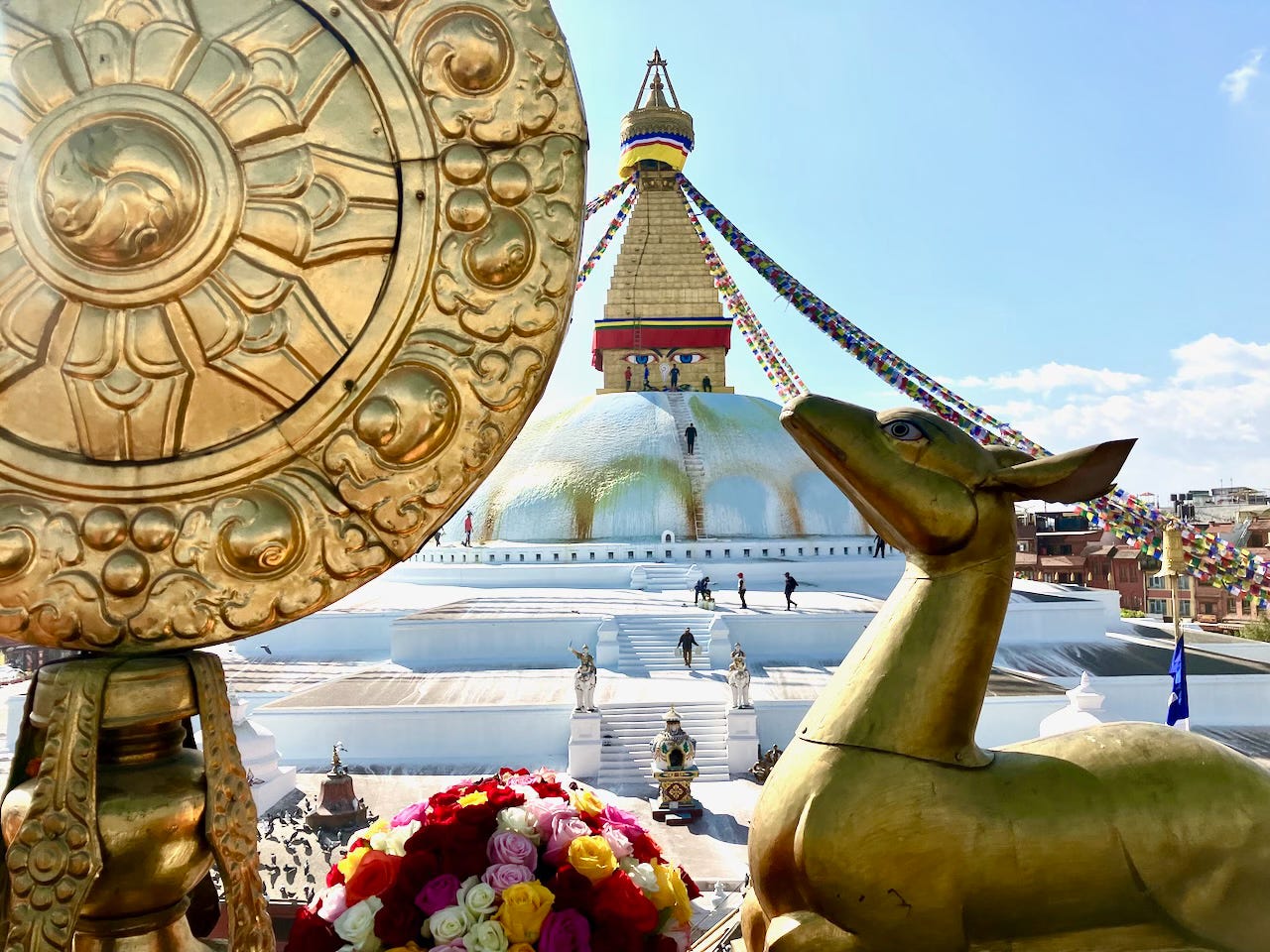
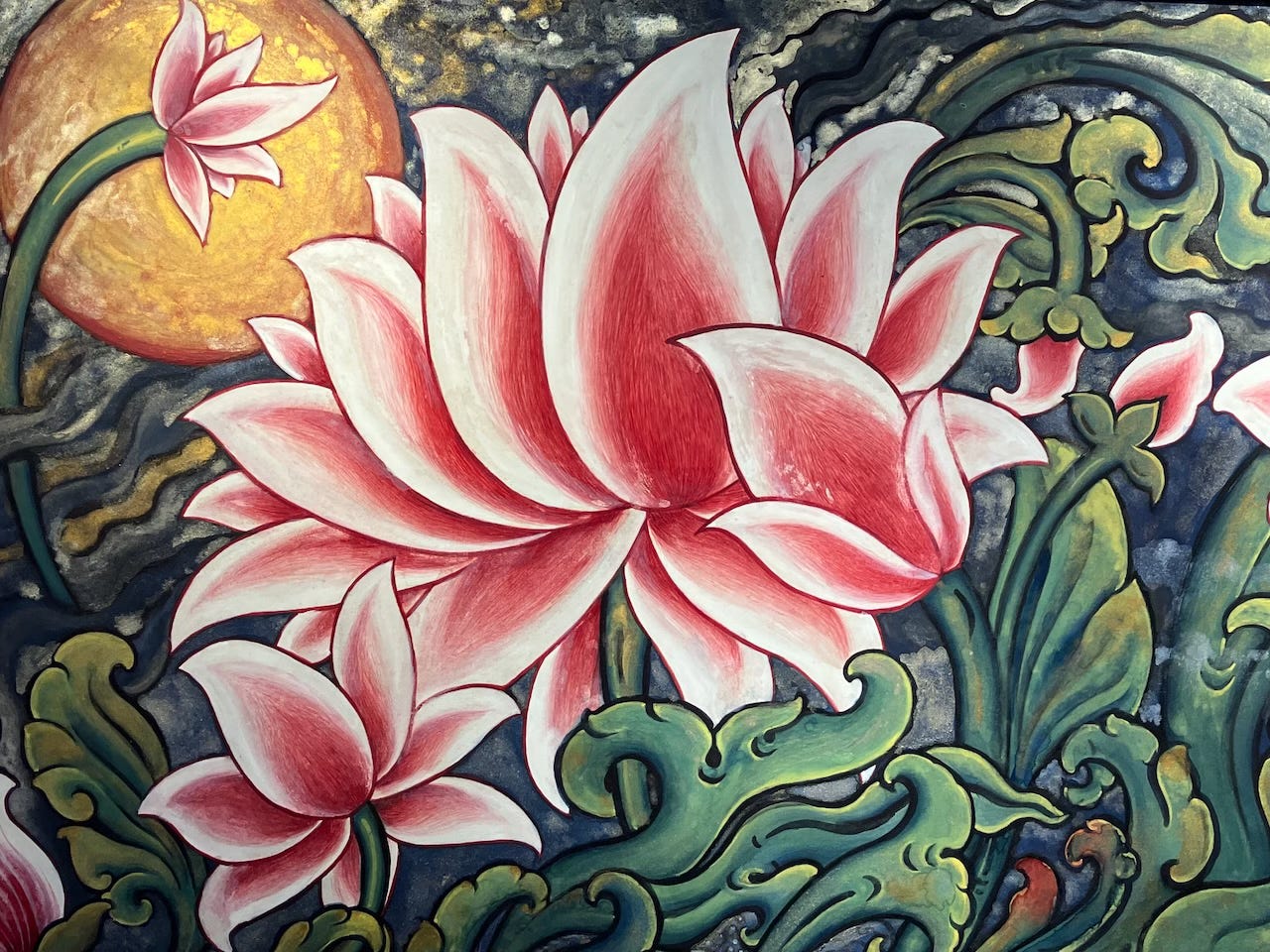
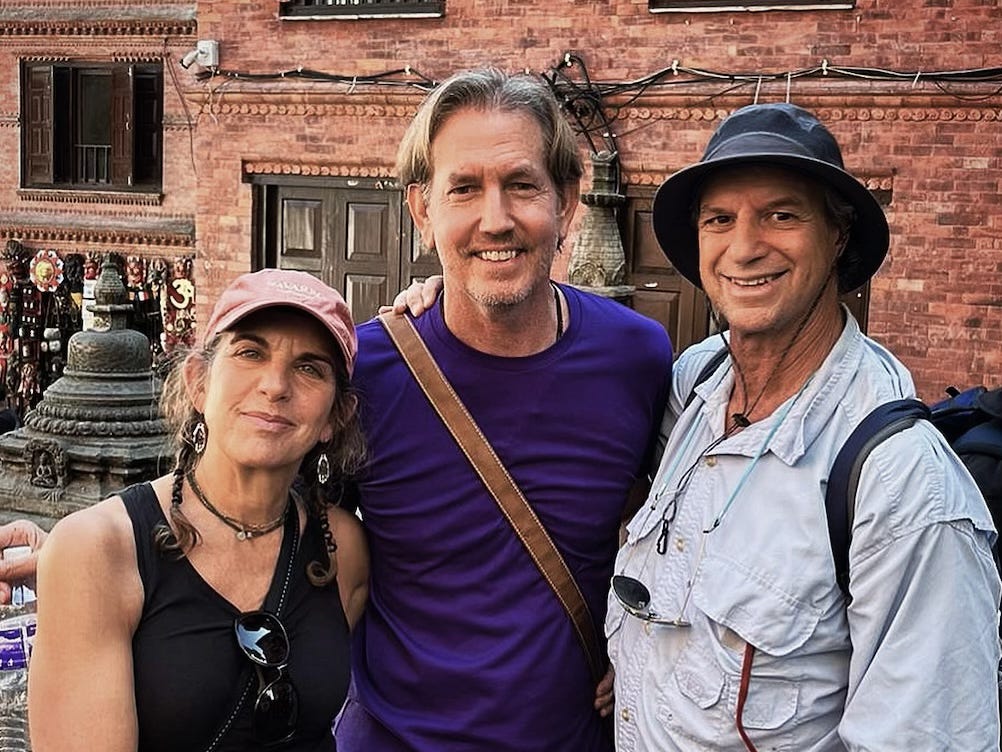
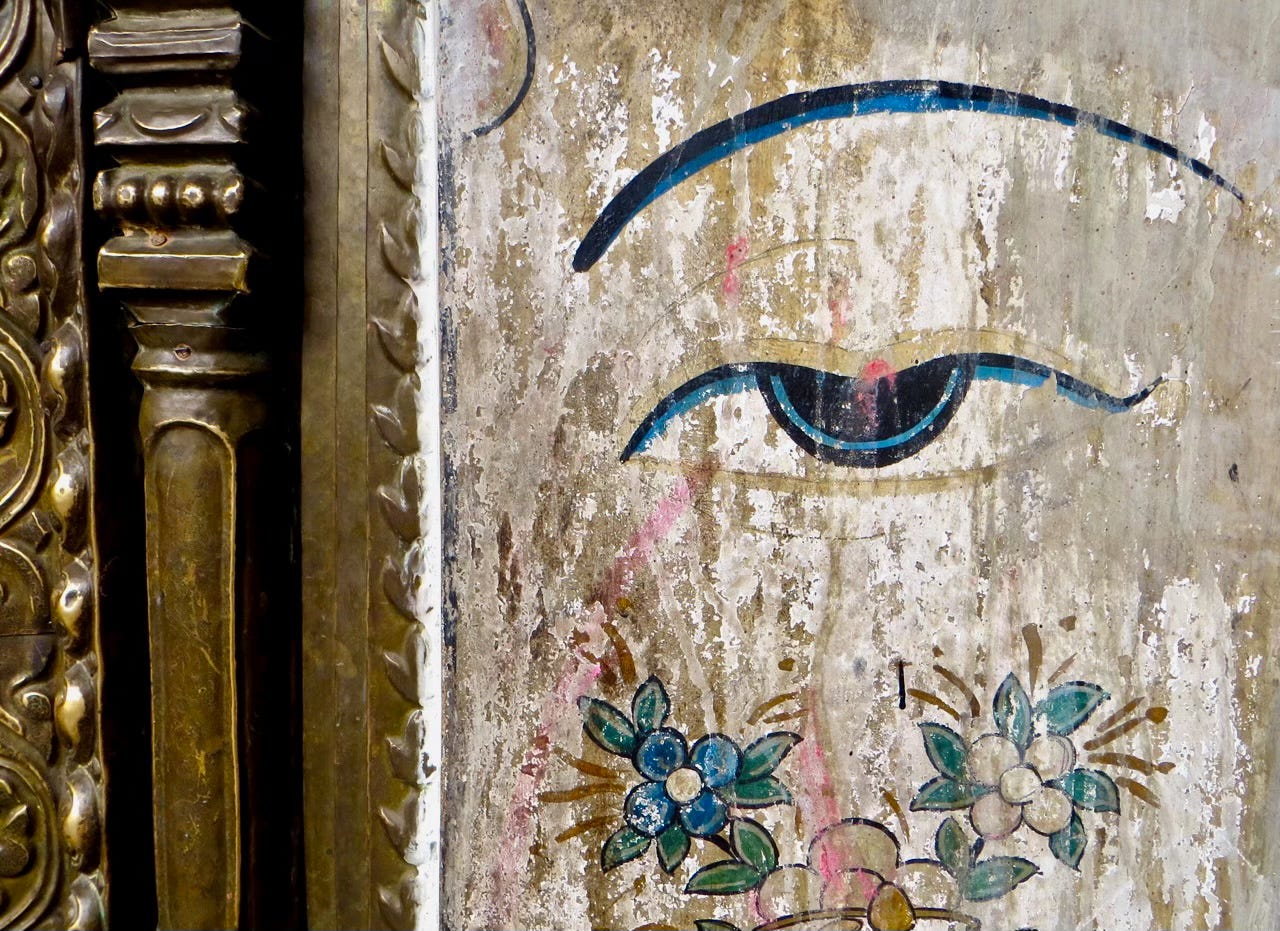
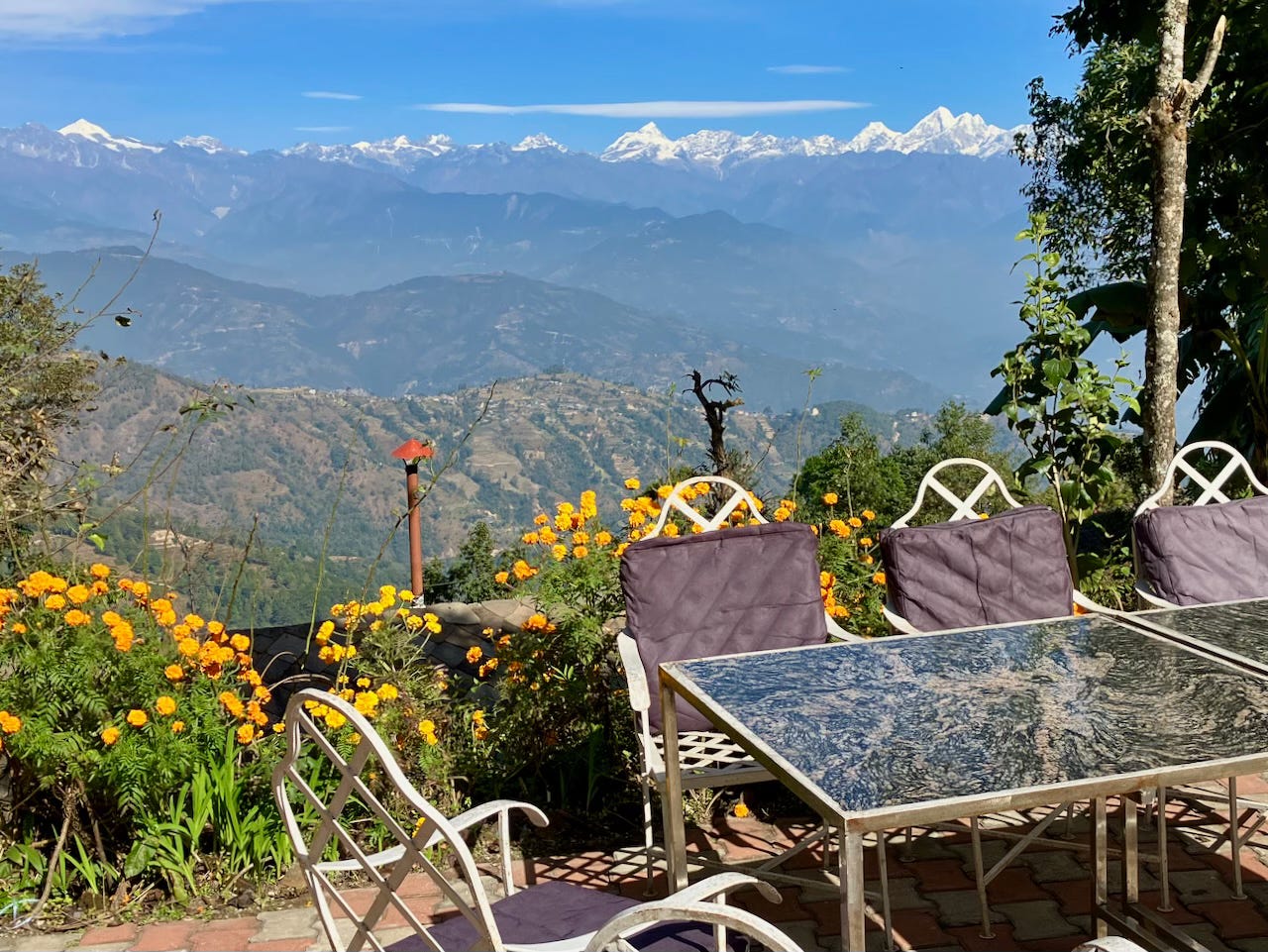
Your stories are always so interesting with so much to think about. The vibe in USA, especially now, is pretty intense. But even 30-40 years ago after trips to Europe - upon returning to San Francisco the increase in speed was palpable, unnerving. Of course after a few days one blended back into the atmosphere with numbness. Now we live in central Mexico at 6,800 feet and the vibe is sooo much more tranquilo. And one can escape to small pueblos and ignore modernity pretty easily. The spiritual is here, a blend of Catholic and indigenous religions, which is pretty interesting. I avoided Mexico for many years earlier in life due to the usual concerns of safety and security. It is now at the center of my heart. Thanks Jeff for your lovely writing.
I participated in the Himalayan Writers Workshop in 2018 and 2022. Sadly, missed Jeff both times. After the 2018 HWW, it was so life changing, I had to go back to Nepal. So I did in 2019 on my own. I did hang out with James some in 2019 and ventured again as in 2018, out to Western Nepal, to Bardia Homestay on the edges of Bardiya National Park. I think of that part of the trip as my Indiana Jones experience, but that's another story.
Nepal is a wonder. For the world's tallest mountains and storied jungles of tigers and elephants. But for all its natural wonders, nothing compares to the personal, the spiritual wonders there.
My advice. If you can, go. There is nothing more than this.